Building Self-Esteem in the Classroom: A New Premier League Primary Stars Resource

Written by PLPS
Premier League Primary Stars helps children to learn through the power of football in more than 19,000 primary schools across England and Wales. Free Premier League Primary Stars resources can be downloaded from www.plprimarystars.com
Supporting children’s mental health and well-being has never been more important. Schools play a pivotal role in nurturing confident, inclusive, and resilient pupils, and teachers need the right tools to make this happen. That’s why Premier League Primary Stars is excited to introduce their latest free teaching resource: Building Self-Esteem.
Developed with input from PSHE experts and teachers, the Building Self-Esteem pack offers teachers an engaging way to help pupils reflect on their identity, celebrate their strengths, and build positive attitudes that foster personal growth. It’s an ideal tool to use in preparation for Children’s Mental Health Week (3-9 February), but its impact goes far beyond a single week – this resource can be used year-round to promote lasting self-worth and inclusivity in the classroom.
Why Self-Esteem Matters
Self-esteem is a cornerstone of mental health. When pupils feel confident and valued, they’re more likely to participate in class, take on challenges, and treat others with kindness and respect. Low self-esteem, on the other hand, can hinder learning, social interactions, and emotional resilience. This is where the Building Self-Esteem resource shines – it provides activities and lessons designed to empower pupils to see their worth and potential.
What the Resource Offers
The Building Self-Esteem resource takes a creative and interactive approach to teaching self-esteem. Through team-building and cooperative activities, pupils explore topics such as:
- Recognising Personal Strengths: Pupils reflect on their unique qualities and achievements, fostering pride and a sense of accomplishment.
- Embracing Differences: Activities encourage pupils to celebrate diversity and understand the importance of inclusivity.
- Setting Meaningful Goals: Lessons guide pupils in identifying and working toward personal goals, helping them develop a growth mindset.
These activities do more than just build individual confidence; they equip pupils with tools to boost the self-esteem of their peers, creating a ripple effect of positivity within the classroom.
A Resource Backed by Expertise
Aligned with the curriculum, the Building Self-Esteem pack supports PSHE (Key Stage 2) in England and Health and Well-being (Progression Steps 2 and 3) in Wales. Its design reflects the needs of teachers and pupils, ensuring that it fits seamlessly into classroom schedules. Clear guidance and expert insights make it easy for teachers to implement, whether they’re new to PSHE or experienced.
Beyond the Classroom: Lifelong Benefits
The impact of building self-esteem extends far beyond the school gates. When pupils develop confidence and a growth mindset, they’re better equipped to handle life’s challenges and contribute positively to their communities. These skills also lay the foundation for healthy relationships, resilience, and academic success.
How to Get Started
The Building Self-Esteem resource is available for free from Premier League Primary Stars, making it accessible to all schools. Teachers can download the pack and start using it immediately to create a confident, inclusive learning environment.
To explore the resource and find out how it can benefit your school, visit the Premier League Primary Stars website. You’ll also find a range of other free teaching materials designed to support mental health, diversity, and inclusion.
Join Us in Supporting Children’s Mental Health
As we approach Children’s Mental Health Week, there’s no better time to introduce the Building Self-Esteem resource in your classroom. Together, we can equip pupils with the confidence and tools they need to thrive, both inside and outside the classroom. Let’s make self-esteem a priority and empower the next generation to embrace their strengths and celebrate the diversity of others.
For more information and resources, visit the Premier League Primary Stars website or explore initiatives supporting Children’s Mental Health Week.
An Educator’s Introduction to Culturally Responsive Teaching

Written by Eleanor Hecks
Eleanor Hecks is a writer who is passionate about helping businesses create inclusive and diverse spaces. She serves as the Editor in Chief of Designerly Magazine.
Today’s classrooms are more diverse than ever before. Students come from various backgrounds, whether cultural, linguistic or socioeconomic. They bring unique perspectives and experiences.
As the educator, your responsibility now extends beyond delivering the curriculum – it also involves fostering an inclusive environment where all your students feel valued, heard and empowered to achieve their true potential. Culturally responsive teaching is an essential solution.
What Is Culturally Responsive Teaching?
CTR is a research-based pedagogical approach that connects students’ cultural backgrounds with their learning. It focuses on recognizing the assets students can bring into the classroom instead of focusing on perceived shortcomings. CRT helps students engage in deeper learning and develop higher-level academic skills by making these connections.
Theories such as Lev Vygotsky’s Zone of Proximal Development and Jerome Bruner’s Scaffolding underpin CRT’s emphasis on building upon students’ knowledge. These approaches support the importance of connecting new learning to an existing schema, which is central to CRT.
Unlike teacher-centered traditional models, CRT emphasises the student. It integrates diverse cultural aspects into the instruction, tailoring the education process to the student’s needs. Since learning is meaningful and engaging, it promotes a sense of belonging, even among students belonging to minority or marginalized groups.
Why Is Culturally Responsive Teaching Necessary?
Implementing CRT is becoming increasingly necessary in today’s educational landscape. The traditional one-size-fits-all approach no longer addresses the realities of today’s classrooms. Here’s why CRT is growing in demand.
Addresses Diversity in Classrooms
Student ethnicity is growing. A 2022 summary released by the Department of Education showed that the student population comprises 6.5% Asian pupils, 6% mixed or black pupils and 2% belonging to other ethnic groups. These statistics reflect the growing diversity of classrooms in the UK. Standardised teaching methods fail to cater to this diversity, which leaves minority students disengaged and underrepresented.
Strengthens Student Engagement
Students are more likely to connect with and retain information when they see their identities reflected in the curriculum. CRT helps make learning more relevant to their lived experiences.
Promotes Equity and Inclusion
CRT seeks to reduce disparities in education by creating equitable learning environments that recognise and celebrate every student’s identity. Inclusive strategies benefit minority students and open opportunities for the majority to learn as the two groups participate in intercultural conversations and learn about each other’s cultures.
Prepares Students for a Globalised World
There is a direct, positive correlation between cultural and emotional intelligence. CRT equips students with the skills to understand and respect other people’s viewpoints.
Students who grasp that there are different cultures and beliefs grow into adults whose emotional intelligence (EI) makes them compassionate, open-minded and culturally sensitive. This emotional intelligence is responsible for between 27% and 45% of job success as a whole, emphasizing the importance of supporting students’ EI before they enter the workforce.
Develops Critical Thinking
Incorporating multicultural perspectives in classrooms challenges students to think critically about social issues, providing them additional context to understand the wide world around them.
How to Apply Culturally Responsive Teaching in Your Classroom
Adopting culturally responsive teaching doesn’t require completely overhauling your current working methods. Small, intentional changes can create significant impacts. Here are practical steps to integrate CRT into your teaching practices.
- Activate students’ knowledge by connecting with their cultural or personal experiences.
- Tie your lessons to real-world events or contemporary issues so students see their value beyond the classroom.
- Ensure your curriculum and resources reflect diverse authors and cultures.
- Consider your classroom’s physical and visual setup to be more inclusive of minority groups.
- Build strong student-teacher relationships and learn more about your students’ interests, cultural backgrounds and identities.
- Create opportunities for group projects and assignments.
- Attend workshops, read research and collaborate with colleagues to refine your pedagogic practices.
The Impact of Culturally Responsive Teaching
Culturally responsive teaching can transform both students and teachers. For your pupils, it strengthens their sense of identity, boosts academic achievement and allows for deeper engagement with their learning experience. For educators, it provides an opportunity to make a meaningful impact in their students’ lives as they contribute to a more equitable education system. Embracing CRT enables students to prepare for the multicultural world beyond their classrooms.
Making mutineers? Why building digital citizenship in the data age is crucial for educators promoting diversity, equity and inclusion
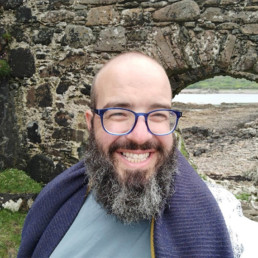
Written by Jonny Tridgell
Jonny began his career as a secondary school teacher in 2009 and has since been a head of sixth form, head of department and lead practitioner for EDI. He has also worked in teacher education as a mentor, curriculum tutor and general tutor on the University of Oxford PGCE. He completed his MSc in Education (Digital and Social Change) at Oxford in 2024. He is currently working as Equality, Diversity & Inclusion Data and Insights Officer at Jesus College, Oxford, alongside roles as a teacher, teacher educator and researcher.
Imagine two sailors. The first navigates his life on ship with diligence and skill, but little concern for how this affects others. His approach to the sea is entirely instrumentalist. The second sailor takes a different approach; she knows her job as well as the first, but she is awake to the power structures that surround her, the web of exploitation and trade that underpin her work. She is committed to making change and serving justice, by mutiny if she must.
Here, following Schober (2014), the sea stands in for the digital world. Our lives are increasingly lived digitally, with our actions and interactions transformed into data that is tracked, sold and mined for the benefit of multinational corporations. Many of us take an instrumentalist approach to this, ignorant (by choice or by indoctrination) of the consequences this process can have, especially for those often rendered invisible by society. This includes those marginalised in our communities and those in the Global South, who bear the brunt of exploitative extraction processes that can involve appalling human rights abuses and untold exacerbation of the climate crisis. Studies have shown that datafication negatively affects those who are already harmed by society (e.g. Zuboff’s 2019 Surveillance Capitalism; Eubanks’ 2018 Automating Inequality) and there are concerns about how schools collect and use data, as well as who funds and designs the programmes we use in our classrooms.
How do we encourage students to become more like the second sailor? There is a great deal of excitement about building digital skills, including in relation to AI, but we need greater engagement with what it means to use the digital responsibly. Shannon Vallor’s excellent Technomoral Virtues (2016) applies virtue ethics to existing online and this could lay groundwork for how we teach young people to be digital citizens, preparing them to make informed choices about the technology they use and how they treat others in the digital sphere. This is not about frightening young people or turning them off technology, but rather teaching them to understand the responsibility they bear and that what they do online has real, physical consequences. Vallor notes the need for us to achieve a new “practical wisdom” that includes an understanding of the digital. This is also where the link to citizenship is crucial – the online world is vast and interconnected and we must encourage young people to see themselves as members of an international community, with attendant responsibilities.
What does this look like in reality? Research is increasingly critical of one-off educational experiences like assemblies or drop days, given that these often have limited impact over time. Rather, it is crucial that we as teachers weave this digital citizenship education into our students’ lives. This might be by developing checks before we recommend or adopt new technology (e.g. asking who funds this and what data will be gathered); this could happen at the level of senior leaders or in our own classrooms. We might model the responsible and careful use of search engines and AI, noting the ways that both can reproduce inequality (as shown harrowingly by Noble’s 2018 study The Algorithms of Oppression). This might also include teaching explicitly about the challenges and benefits of digitalisation and datafication in our lessons, perhaps with an RE lesson considering what it means to be human or a mathematics lesson on how statistics are used online. Lessons can be learned from work done on decolonising curriculum here, as well as the ways in which colleagues incorporate other duties like SMSC, CEIAG and fundamental British values. Digital citizenship can and should become part of the goal of schools in the UK, alongside the more instrumentalist approach to digital skills being promoted so widely already.
As life becomes increasingly online – as we all become sailors on this wild ocean – it is crucial that we are preparing our students to look out for those who are often already marginalised or forgotten, driven out of sight and therefore out of mind. No one sailor can do this on her own – she needs a teacher.
If you’re interested in hearing more about Jonny’s work or how to incorporate digital citizenship into your teaching, his MSc thesis “Making Mutineers: Reimagining religious education for the promotion of virtuous digital citizenship” can be read here. You can also sign up to the in-person programme Jonny is running with the University of Oxford’s Bodleian Libraries here.
Empowerment, Inclusion, and Storytelling: A New Approach to History Education
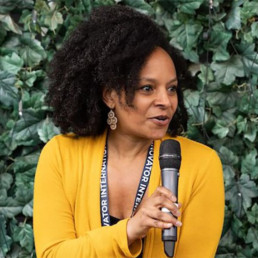
Written by Dana Saxon
Dana Saxon is an educator, writer, and family historian who seeks to address global inequities in education. Her organisation, Ancestors unKnown, changes the way pupils learn about history, themselves, and the world around them, providing opportunities for them to learn about marginalised histories and stories from their own communities.
Traditional history education can sometimes feel stale and uninspired – a series of dates and old white men who seem to have little or no relevance to the lives of today’s children. This approach, heavily focused on Eurocentric perspectives and the accomplishments of a select few, can leave many students feeling excluded and disconnected from the past.
But, as even Ofsted explained in their 2023 report about history education, “Every pupil is entitled to encounters with the richness of the past and the complexity of historical enquiry”.
A New Approach: Student Stories at the Centre
What if we reframed history education? What if we centred the learning experience around the unique stories of each child?
This is the vision driving Ancestors unKnown, a unique approach to history education that empowers young people by weaving their personal narratives into the larger context of local and global history.
At the heart of our methodology lies the belief that every child’s story is a valuable piece of the historical puzzle. We encourage students to explore their own family and community histories through oral histories and archival research. By interviewing elders, collecting family artefacts, and delving into local archives, children uncover the unique stories of their ancestors and the elders in their community, including their struggles, their triumphs, and their contributions to society.
Then, while our students are empowered to personalise historical research, we help them connect these personal narratives with the untold and often marginalised histories that have shaped our world. As a result, students learn about the contributions of diverse communities, stories about migration, struggles for social justice, and other hidden stories that lie beneath the surface of conventional historical narratives.
The Benefits of Ancestors unKnown
Our integrated approach fosters a profound sense of belonging and empowerment. When children see how their own stories connect to the larger historical narrative, they develop a deeper understanding of their place in the world. They begin to see themselves as active participants in history, not just passive observers.
Furthermore, by sharing their family histories with their classmates, children gain valuable insights into the diverse experiences and perspectives of those around them. This fosters empathy, understanding, and a greater appreciation for the people and communities around them.
With our approach, Ancestors unKnown is making history curriculum more inclusive and equitable. By centring the experiences of diverse communities and highlighting the contributions of marginalised groups, we challenge traditional narratives and create a more representative understanding of the past.
“Our community interviews were really successful!” shared a primary school teacher about their Year 5 Ancestors unKnown project.” We interviewed adults from South America, England, France, China and Nigeria! The children asked some really interesting questions and really enjoyed listening to the different family and community stories.”
Bringing Ancestors unKnown to More Classrooms
Ancestors unKnown provides schools with a toolkit and ongoing support to implement our programme during one school term for Y5 or Y6. We also offer teacher training, parent/community engagement workshops, and access to a network of local historians and storytellers as guest lecturers.
We believe that by empowering teachers, students, and their families with the tools and knowledge to uncover their own historical narratives, we can create a more inclusive and engaging learning experience for everyone.
Ready to transform history education in your school? Learn more about our programme and contact us to bring Ancestors unKnown into your classrooms.
Let’s work together to empower the next generation of historians to tell a different, more inclusive story about the past – a story that includes their ancestors.
How to Drop-in LGBT+ References Across the Curriculum
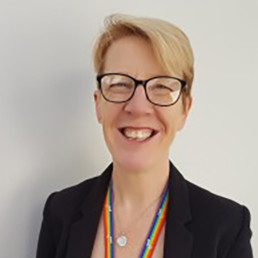
Written by Mel Lane
Mel Lane (she/her) is Head of Education at Pop’n’Olly. She has been a primary school teacher and teacher trainer for nearly 30 years and worked in schools on LGBT+ inclusion policies with thousands of children and school staff. Mel is a co- author of What Does LGBT+ Mean? (Pop’n’Olly, 2021).
When I first started trying to be LGBT+ inclusive in my lessons I was really concerned that it might prompt a lot of off-topic and probably negative comments from the children in my Year 6 class. We were learning about possessive apostrophes and I tentatively put the following on the board as a warm-up discussion:
Where should we put the apostrophe?
- The girls cloakroom
- The childrens playground
- Davids boyfriend
I stepped back and held my breath, waiting for the silly comments, the sniggers and the inevitable disruption and NOTHING HAPPENED! I literally couldn’t believe it.
At that stage, I was very new to inclusion work. We had nothing inclusive stuck up in the classroom, There’d been no inclusive assemblies and we’d just briefly touched on inclusion in one PSHE lesson. Surely, they’d never handle this, I thought. How wrong I was. The class quietly got on with the work and we discussed exactly where the apostrophes should go and why we’d put them there.
I think growing up and starting my career under Section 28 (the law that silenced discussion around LGBT+ issues in school) had given me such a strong sense that I ‘shouldn’t’ be talking about these issues in school. The children (aren’t children awesome!) showed me otherwise. They showed me that just dropping in references to LGBT+ lives and showing they’re just another way to be a human, was more than fine for them.
Now, I’m a huge fan of the drop-in for ALL TEACHERS, ALL SUBJECTS. There are so many easy examples we can include.
Here are a few suggestions:
- Sara went to the cinema with her two Mums and her brother. Adult tickets
cost £5.50, children’s tickets cost £2.50. How much did it cost for them all to watch the film?
- One of the people who really influenced Martin Luther King was Bayard Rustin. He was a black, gay man, inspired by Gandhi to believe in the power of non-violence. Do you think non-violence is a good way to get across your point of view?
- Professional footballer Jake Daniels said coming out as gay and having the support of his team-mates made him feel so good it helped him score four goals in his next match. Why do you think this support helped him so much?
- Marie vit à Paris avec ses deux papas.
When we include positive references to LGBT+ lives in all aspects of our teaching, we indicate to children that LGBT+ people are just as much part of the world as everyone else – that LGBT+ people live as diverse and varied lives as everyone else and that being LGBT+ is just another way to be a human.
Sometimes I’m asked why we should need to make these references – that we are drawing attention to something when we want everyone to be treated the same without reference to differences, but by talking positively about the rich diversity of LGBT+ lives we are helping to counter hundreds of years of silence. Silence sends an implicit message that ‘this is something we don’t mention’. Active references to LGBT+ lives send a message to all children that being LGBT+ is something positive, something completely normal and something that we can talk about with pride.
Empowering pupils to challenge gender stereotypes: A Premier League Primary Stars initiative

Written by PLPS
Premier League Primary Stars helps children to learn through the power of football in more than 19,000 primary schools across England and Wales. Free Premier League Primary Stars resources can be downloaded from www.plprimarystars.com
Gender stereotypes remain a persistent barrier to achieving equity in education and society. They influence how young people perceive themselves and others, shaping aspirations, limiting opportunities, and perpetuating inequality. This is why initiatives that actively address these biases are vital. One such initiative is the new resource from Premier League Primary Stars, designed to help teachers tackle gender stereotyping in schools while fostering diversity, equity, and inclusion.
The importance of challenging gender stereotypes
Gender stereotypes are deeply rooted assumptions about what boys and girls can or should do, often perpetuated by cultural norms, media, and historical biases. For instance, boys might be discouraged from pursuing artistic hobbies, while girls may face discouragement in sports or STEM subjects. Left unchecked, these stereotypes not only limit individual potential but also contribute to systemic inequality, reinforcing societal structures that marginalise certain groups.
By addressing these biases early, teachers can empower pupils to critically evaluate and challenge such assumptions. Doing so creates a foundation for more inclusive attitudes, enabling children to celebrate diversity and develop empathy.
A free resource that makes a difference
Premier League Primary Stars’ new gender stereotyping lesson is a comprehensive, teacher-friendly tool that equips teachers to lead impactful discussions and activities. Designed for Key Stage 2 pupils in England and Progression Steps 2 and 3 in Wales, the resource is both practical and inspiring.
Key features of the resource
- Empowering activities:
The lesson introduces pupils to the concept of gender stereotypes and helps them identify biases they may encounter in school or the wider world. Through engaging activities and thought-provoking discussions, pupils gain the confidence to challenge these stereotypes constructively. - Inspiring role models:
Representation matters. The lesson highlights stories of individuals – both male and female – who have defied traditional gender roles, encouraging pupils to think critically and celebrate diversity. From female athletes excelling in male-dominated sports to male caregivers embracing nurturing roles, these examples inspire young minds to imagine a world free of limitations. - Youth voice film:
The inclusion of a dynamic film amplifies the voices of young people, providing relatable insights and practical advice on fostering inclusion. This multimedia approach helps make the resource accessible and engaging, sparking meaningful conversations in the classroom. - Expertly crafted for teachers:
Developed in collaboration with subject matter experts and practising teachers, the resource is user-friendly and aligned with the curriculum. This ensures that teachers are well-supported in delivering sensitive and impactful lessons.
Real-world impact in schools
Feedback from teachers who have used the resource has been overwhelmingly positive. One PSHE primary teacher in Wales noted:
“This is a very user-friendly and engaging lesson that effectively targets the idea of stereotyping in school and out of school.”
The practical design of the lesson not only saves teachers time but also builds their confidence in addressing a complex topic. For pupils, the benefits are profound. They develop critical thinking skills, inclusive attitudes, and the ability to challenge harmful stereotypes – skills that will serve them well throughout their lives.
A call to action for teachers
Teachers have a unique opportunity to shape the next generation’s understanding of equity and inclusion. Tackling gender stereotypes in the classroom is a crucial step toward this goal. The Premier League Primary Stars resource provides a roadmap for doing just that, empowering both teachers and pupils to contribute to a more inclusive society.
Premier League encourages teachers across the UK to explore this free resource and integrate it into their PSHE or Health and Well-being lessons. By fostering open discussions and providing pupils with tools to challenge stereotypes, we can help dismantle barriers and create a world where all children can thrive – regardless of their gender.
For more information and to access the resource, visit Premier League Primary Stars.
Together, let’s champion diversity, equity, and inclusion in every classroom.
Preventing Digital and Sexual Violence
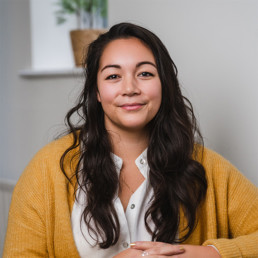
Written by Georgia Latief
Georgia is a Content & Marketing freelancer who supports Life Lessons with their content and marketing including social media, blogs, website upkeep, manages our webinar and drop-in sessions and partner school testimonials. She helps multiple business across the UK supporting them with their marketing and content needs with her business Latief Content & Marketing. Before joining Life Lessons, Georgia worked for an education recruitment company and a safeguarding company both based in Wales. She is originally from New Zealand and has a background in theatre and media studies.
Digital and sexual violence is a massive global issue. Teachers need support in order to gain the confidence in addressing these issues and lead discussions on these topics to prevent future violence. Life Lessons has worked in partnership with UCL and Anglia Ruskin University to develop a set of evidence based materials for schools that empower educators to counter digital and sexual violence.
In November 2024 Life Lessons hosted a webinar on Empowering Educators to Eliminate Digital and Sexual Violence. Our speakers discussed the current issue of digital and sexual violence in our society and how best to support educators to have these conversations with their students.
We also launched our brand new Violence Prevention course, developed with UCL and Anglia Ruskin University. This course includes a set of evidenced based materials for schools that empower educators to counter digital and sexual violence.
What is Digital and Sexual Violence?
Digital violence is a very broad term which encompasses any form of violence perpetrated using digital technologies, including:
- Cyber bullying
- Trolling
- Cyber stalking
- Non-consensual sharing of private images
Sexual violence is any sexual act or attempt to obtain a sexual act by violence, coercion, threat or intimidation, or taking advantage of the inability of the victim to give free consent.
When violence is perpetrated or facilitated through digital technologies, it’s known as Digital Sexual Violence and includes:
- Online sexual harassment
- Sextortion
- Cyber bullying with a sexual nature
Statistics Around Digital and Sexual Violence
When we talk about digital and sexual violence is it vital to understand the state of the nation when it comes to this violence in our society and around the world.
Digital and sexual violence has become normalised, with Ofsted’s 2021 report finding that 80% of pupils have seen unwanted comments of a sexual nature. We also see that women and girls experience higher levels of digital and sexual violence than their male counterparts.
Ofcom’s Online Safety Report 2023 found that 53% of girls and young women aged 11-21 reported encountering sexist comments or jokes online and 57% of young women aged 17-21 know a girl their age who has experienced sexual harassment online.
Not only has digital and sexual violence become normalised, but it is also a massive societal problem. NSPCC reports that violence against women and girls accounted for 20% of all reported crime in England/Wales from 2022-23. Women and girls across the world are experiencing digital and sexual violence with 1 girl being raped every 6 minutes in Brazil.
Clearly something needs to be done to prevent future violence occurring.
How Education can Help Prevent Digital and Sexual Violence
Educators are uniquely placed to empower both students and staff to report instances of sexual violence and harassment, and to continuously work toward fostering a healthy school environment where such behaviours are challenged and not normalised.
On the topic on digital and sexual violence, Stephen Morgan, the minister for early education said:
“…There’s probably more we can do around misogyny in schools, and I’m keen to talk to school leaders about what that might look like.”
“The escalatory nature of misogyny means that education plays a crucial role in challenging these attitudes early on. Through relationships, sex, and health education (RSHE), we are equipping young people with the knowledge and skills to recognise and reject harmful content, build empathy, and promote respect for all.”
The 2024 Ofsted Handbook also states that “Inspectors will expect schools to have effective behaviour policies in place regarding harmful sexual behaviour. The policies should include details of appropriate sanctions that should be applied consistently and that reflect and are consistent with the messages that are taught across the curriculum.”
However; we frequently hear from educators that they lack confidence in addressing these issues and leading discussions on these topics. This is what inspired us to create our Violence Prevention Course.
Life Lessons Violence Prevention Course and Resources
This course has been developed in partnership with UCL and Anglia Ruskin University to develop a set of evidence based materials for schools that empower educators to counter digital and sexual violence.
These materials are based on the latest research into digital harms and image-based sexual violence and aims to support educators to tackle this type of inappropriate behaviour.
The course includes:
- CPD for educators and include a certification
5 units which cover:
- Introduction to sexual violence prevention
- Understanding sexual violence
- Educating about gender and sexual violence
- Tech facilitated gender based violence
- Dealing with disclosures and instances of sexual violence
We have also included a free lesson and videos for secondary educators:
- A 1 hour lesson for use with year 10 secondary students. Copy and edit to suit the needs of your classroom.
- A collection of short Life Lessons videos addressing the topics of sexual and digital violence. These videos feature boys discussing the issue, demonstrating openness, and modeling how to engage in meaningful conversations to be part of the solution.
This course is free for educators. Access it here: Violence Prevention – Life Lessons
References:
- Ofsted Annual Report 2021/22: education, children’s services and skills – GOV.UK
- Online Nation – Ofcom
- Violence Against Women and Girls (VAWG) National Policing Statement 2024 July 2024
- Violence against women in Brazil reaches highest levels on record | Brazil | The Guardian
- There’s “Much More To Do” To Combat Misogyny In Schools, Says Minister
- School inspection handbook – GOV.UK
No child left on the sidelines: ParalympicsGB's Equal Play Campaign and the push for inclusive PE
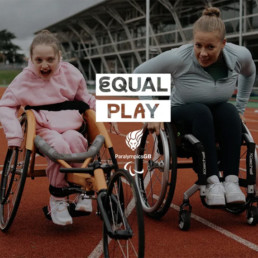
Written by ParalympicsGB
ParalympicsGB is the UK’s largest disability sports charity and relies on the support of its commercial partners to deliver a world class environment where athletes can achieve their personal best performances and break down barriers for all disabled people. Further details are available at https://paralympics.org.uk/
Physical education (PE) has always offered young people the chance to develop confidence, teamwork, and physical literacy. However, for millions of disabled children across the UK, inclusive and meaningful PE is still largely inaccessible. In response, ParalympicsGB has launched their Equal Play Campaign, a transformative initiative to ensure every child, regardless of ability, has equal opportunities in school sports. This movement comes at a crucial time, aligning with the Government’s review of the national curriculum. With so much at stake, the campaign’s message is clear: action is needed now.
A curriculum review with high stakes for disabled pupils
The ongoing curriculum review holds immense potential to address systemic issues that have long affected disabled pupils and those with Special Educational Needs and Disabilities (SEND). Currently, PE is not considered a core subject, which means it often takes a back seat to academic priorities. Even when PE is available, it frequently focuses on traditional sports, leaving out disabled pupils who require adaptive and inclusive activities.
ParalympicsGB has raised serious concerns that disabled young people are being overlooked in the review. In a society where 1.5 million disabled children are missing out on essential physical activities, this is unacceptable. Alarmingly, only one in four disabled children regularly participate in school sports, denying them the chance to boost their development, social skills, and mental well-being. This is a disparity we can no longer ignore.
The importance of breaking barriers
Disabled pupils face a complex array of barriers that differ significantly between mainstream and special schools. Addressing these challenges requires a comprehensive and inclusive approach. Crucially, we must understand that disabled pupils are not a monolithic group; their needs vary widely. From a lack of specialised equipment to insufficient teacher training, the obstacles are varied but solvable with the right strategies.
ParalympicsGB advocates for a more holistic understanding of physical literacy, one that celebrates diverse ways of being active. This vision moves beyond traditional sports to include adaptive and non-competitive activities, turning PE into a positive and empowering experience. The impact of inclusive PE is profound: it not only improves physical health but also fosters social inclusion, boosts self-confidence, and establishes lifelong habits of well-being.
Transforming the culture of PE
Creating inclusive PE requires a cultural shift in how physical education is perceived and delivered. Currently, the existing model often leaves disabled children feeling excluded or unable to participate meaningfully. ParalympicsGB emphasises the need to reimagine PE, prioritising equity and inclusivity to ensure every student can engage and benefit.
A key factor in this transformation is empowering teachers. Teachers are crucial to implementing change but often lack the resources or training to adapt lessons for disabled pupils. ParalympicsGB stresses the importance of revising teacher training programs to include robust, practical modules on inclusive physical education. By equipping teachers with the right skills—such as modifying activities to accommodate diverse needs—we can ensure that all pupils have equal opportunities.
Representation also plays a critical role. Increasing the number of disabled people in teaching positions can make PE more relatable and inspiring for disabled pupils. Teachers with lived experiences of disability offer unique insights and can act as powerful role models. Seeing someone who shares their experiences and challenges can fundamentally change how disabled children view their own potential.
Practical solutions from the Equal Play Campaign
The Equal Play Campaign puts forward targeted, achievable solutions aimed at building a more inclusive PE landscape:
- Empowering teachers: Providing continuous professional development and resources, such as workshops, guides, and access to best practices, to help teachers deliver inclusive lessons confidently.
- Adapting teacher training: Reforming initial teacher education to include strategies for inclusive PE, ensuring teachers are well-prepared to support all pupils effectively.
- Redefining PE’s role: Shifting the emphasis from competition to physical literacy. This approach makes PE about personal growth, joy, and inclusivity, rather than just winning or losing.
- Boosting representation: Encouraging disabled individuals to become teachers, thus bringing valuable perspectives to schools and inspiring pupils.
These changes are not just aspirational but necessary. By implementing these measures, the Government can take significant steps toward educational equity, ensuring no child is left out.
The time for change is bow
The curriculum review presents a rare chance to set new standards for inclusivity in schools. ParalympicsGB’s Equal Play Campaign underscores that PE should be a welcoming space for all children to experience the joy of movement. This effort is about more than just sport; it represents a commitment to a society that values every member equally.
For those wanting to learn more, visit ParalympicsGB’s website. Teachers, parents, policymakers, and community members all have a role to play in creating an education system that genuinely leaves no child behind.
By advocating for inclusive PE, we are laying the groundwork for a future where diversity, equity, and inclusion are not merely aspirational values but everyday realities. Let’s ensure every child, regardless of ability, gets the chance to play, grow, and thrive.
Addressing the impact of global conflicts
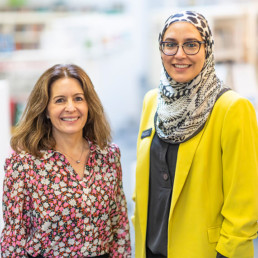
Written by Claire Shooter and Monia Zahid
Claire is Deputy Head Pastoral and DSL with a keen interest in EDI. She changed career and went into teaching 16 years ago after her children were born and has never regretted it. Over this time, she has enjoyed a range of roles including Head of Spanish and Head of Year.
Monia is Head of Equity, Diversity and Inclusion and teacher of Economics at Haberdashers’ Boys’ School. She oversees EDI provision at the school and is passionate in driving change for the whole school community.
If you are to take just one message from this blog, then let it be that schools must always be safe spaces for students, especially in times of global unrest. Over the past year, our school has learned invaluable lessons about how global conflicts can ripple into a school community, affecting students in profound ways.
Our school, located just outside North West London, has a vibrant and diverse community, with active faith and cultural societies, a multi-faith prayer room, and celebrations of key festivals from many religious traditions, including Eid and Chanukah. We would say that our diversity is our ‘superpower’ and our students have ample opportunities to learn about each other’s faiths.
So the immediate weeks following October 7th 2023 threw an unprecedented and emotional challenge.
At our initial assembly following the horrific events of that day, we took a moment to reflect on the events unfolding in Israel and Gaza, honoured the casualties, and reminded students not to engage in divisive political discourse that could lead to conflict or tension within the school.
However, many of our Jewish students felt frustrated and unsupported, feeling that we were minimising their pain by not acknowledging the attack for what it was—a terrorist act. They felt that if such violence had occurred in any other part of the world, it would have been called out more forcefully. Many of our Muslim students expressed their fears about being targeted due to their Muslim identity. They voiced frustration that the suffering of innocent Palestinians was not being acknowledged, while stereotypes and misinformation about Muslims went unchallenged.
Both Muslim and Jewish students were living in fear, be it Zain who worried about his hijab-wearing sister, or Max who worried about wearing his Star of David chain. Both felt nervous to show their identities in public.
This marked the start of a week of difficult conversations as our student body articulately and respectfully voiced their concerns. We quickly found ways to offer support. One of the first initiatives was the student-led prayer service, a daily gathering attended by many students who wanted to reflect, pray, or simply share a sense of community.
At the end of that week our Headmaster addressed the entire school in a special assembly. He acknowledged the emotional toll on our community, quoted students who had bravely shared their perspectives, and provided historical context for the conflict. He reframed our message of unity and respect, encouraging everyone to treat each other with kindness and grace. The assembly ended with a moving moment of reflection led by our Faith Assembly Committees.
Social media was another challenge to address. Algorithms often amplify one-sided views, and young people increasingly rely on platforms like Instagram and TikTok for their news, rather than traditional sources. These platforms often mix fact with fiction, viral conspiracy theories, and disturbing images. We provided clear guidelines on how to navigate social media responsibly, reminding students to think critically before liking or sharing content and to be mindful of the digital footprint they leave behind. When inappropriate posts appeared, we used a combination of education and sanction to address issues.
We also realised that staff members needed support, unsure of how to engage in conversations for fear of being seen as political. Many felt isolated, and simply taking the time to approach another colleague and acknowledge the difficulty of the situation went a long way toward breaking down those feelings. By fostering an environment where everyone, regardless of their political views, could talk openly and with empathy, we began to rebuild a sense of community. It’s not about politics, it’s about humanity.
While we acknowledge that there is still much work and education to be done, we are committed to trying to guide our students through the complexities of the world around them. Our students have voiced appreciation for the fact that tensions are left outside the school gates, and it’s a safe place for all. Whilst we don’t have all the answers, we’re committed to ensuring that:
– Anti-racism efforts also incorporate discussions on both antisemitism and Islamophobia, so that all students, regardless of their background, can become allies in challenging hate.
– We ask the difficult questions and acknowledge the emotional weight of these issues—not to take a political stance, but to show empathy and understanding.
– We create opportunities for students to learn from diverse views, helping them understand that dialogue is not about winning arguments but about hearing other perspectives and learning to ‘disagree agreeably’.
– We recognise that this work is ongoing, and schools need to create spaces for continued dialogue, assemblies, and reflection.
– Above all, we strive to create a safe and supportive space for *all* students, where diversity is celebrated, and the narratives students encounter promote unity, respect, and mutual understanding.
What does it mean to our families when we support bilingual literacy?
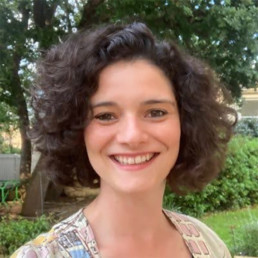
Written by Emma Sheppard
Emma founded The MTPT Project, the UK's charity for parent teachers, in 2016 when on maternity leave with her first child. She has 12 years experience as an English teacher, Lead Practitioner and ITT Lead, and now runs The MTPT Project full time.
This is a vulnerable blog to share publicly. If you follow me on LinkedIn, it will reveal the hard work and heartache behind the upbeat and practical strategies around bilingual education that I often share.
Of course, we save our shiniest achievements for social media platforms but over the last few weeks – in the real world – I have felt keenly, the crushing failures of being “immigrant mum”.
For context, I am an educated middle-class British former teacher living in France with my bilingual children and French husband. My children were born in the UK, have been fully bilingual since birth, and now attend French state primary school. I’m a fluent French speaker (and have a state-issued certificate to prove it) work in English and socialise in both languages.
Sounds dreamy, right?
But sometimes, I feel as if I am losing my children – that they are so culturally embedded in the country we live in, that they have no connection to the identity of their birth country. My identity.
This fortnight, we have been learning about Advent in our home-learning English lessons. They don’t go to school on Wednesdays, you see, because it’s France.
My son, who had a year of lockdown education, is au fait with the characters. He was, after all, the donkey in his Reception nativity and plodded along to Bethlehem with Mary and Joseph. He best friend Gabriel was… the angel Gabriel.
My daughter, who has been educated in the secular French system since pre-school, has a vague understanding of the baby, called Jesus. The star? Joseph? Virgin birth? Heavenly hosts? Gold, frankincense and myrhh? Even the word ‘shepherd’ in English? All these cultural indicators so essential to the British primary education experience? Not a clue.
It gets worse: for the last three years, we’ve attended the carol service run by the local American church. I alone in my family know the words to Silent Night. My husband and children are ignorant to the joy of “Glororororororia” or “Fivvvvee go’old ringggsss!” and as such, they can’t sit through a full service. I hissingly insisted my husband remove them (and himself) somewhere between Royal David’s City and Angels in the Realm of Glory and – French and relieved – they went to eat waffles and ride fairground rollercoasters in le marché de noël.
Extended writing – the lovely recipes and stories and letters you’d expect in lower KS3 – simply aren’t required of my children yet in the French state system. Admittedly, their grammatical knowledge is fast surpassing my own, but mostly they are asked to copy, or write short responses to comprehension activities.
They have never been asked to be a Victorian maid or a to persuade anyone to save the rainforest. They have not written a diary entry from a ship in the middle of the Atlantic, or a newspaper article about a volcanic eruption. Maybe creativity, generally, will never be required of them?
The request to write the Nativity story therefore resulted in meltdowns on all fronts: my son can’t bear the idea of more than two sentences and disappears into the ether of his daydreams; my daughter can’t remember how to spell ‘all’, even though it’s been on her spelling list for millennia.
My children are spectacular: there is no need to qualify this with any reasons why. They just are.
But they are not British, and they have no other encouragement to be British than me, their mother. Ensuring they retain a sense of this identity has become a base urge in me. They will know who Shakespeare is. They will eat jacket potatoes. They will understand the culture importance of a Harvest Festival. Failure simply isn’t an option.
But a lot of the time I feel like a lone salmon, swimming against the current. And increasingly, I’m experiencing the anticipatory grief of becoming the mother of two French children.
For the first-generation immigrant parents in our school communities, how keenly is this loss also felt?
Do they, too, look at their children and see huge holes where a shared identity should be?
And as schools, what can we do to support families who might be going through similar experiences?
(Here come those upbeat, practical strategies…)
- Understand, appreciate and acknowledge (if you can) the cultures of your school communities – including the educational cultures
- Value and encourage the use of the home language – never fall into the trap of thinking that one language leads to an inability to acquire another because the opposite is true – languages feed off one another and grow together
- Value languages, and teach them well – from the earliest possible age
- Create bilingual streams if appropriate for your school context
- Introduce Community Language GCSEs and A Levels as far as your timetabling or extra-curricular offer can support – and involve parents in their children’s preparation for these exams
- Research community language hubs and signpost these to parents if you don’t have the capacity to ‘in house’
- Align language with culture – food, traditions, literature, film, history, sports – and take opportunities to celebrate these
- Foster opportunities where parents can make connections and build their own language communities
As cultural diversity in our schools increases, assumptions of monolingualism in our curricula and communities will only become a hindrance. Celebration and practical support for families aspiring to full bi- or multilingualism will bring out the best in our students and support the full complexity of their identities.

